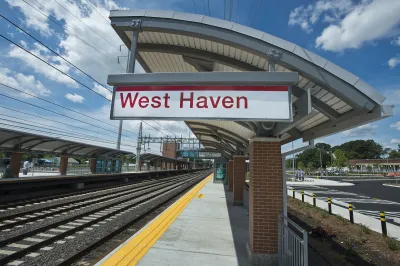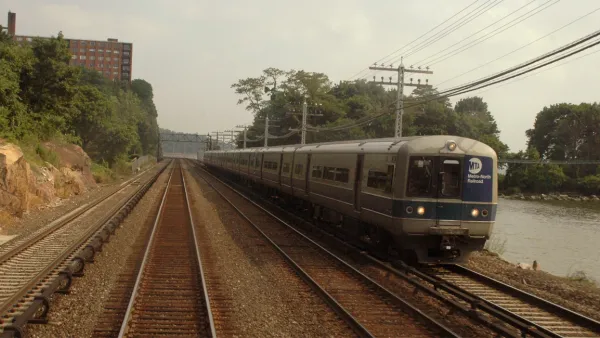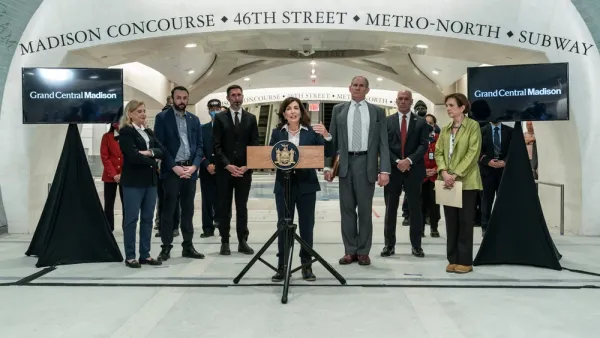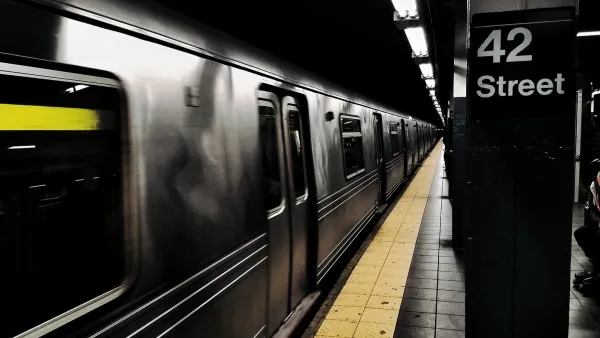Rather than bonds, an op-ed makes the case for electronic tolls to pay for improvements to commuter rail lines between New York City and Connecticut.

"Long commutes into New York City and within Connecticut mean our state is a less attractive place for people to live," writes Connecticut resident Michael Critelli. "People who travel into New York often drive and park at a train station and then get on subways or buses or walk to a workplace. As a result, their commute can now be close to two hours in each direction, four hours daily."
As maintenance and safety concerns pile up along MTA's Metro-North Railroad, Connecticut communities once within commuting distance of New York are becoming less attractive options. "Speed restrictions are in place in many locations where infrastructure is old and unreliable, where there are sharp curves and where there are bottlenecks caused by limited track capacity," Critelli writes.
Bond measures to fund rail upgrades, he goes on, aren't sustainable over the long term. "With tolling we can collect user fees from the out-of-state drivers who currently get a free ride on our highways — 40 percent of tolling revenues are expected to be collected from out-of-state drivers. Tolls can also help us reduce congestion and lower vehicle emissions."
FULL STORY: The hidden cost of slower, less reliable commuter rail service: Op-Ed

National Parks Layoffs Will Cause Communities to Lose Billions
Thousands of essential park workers were laid off this week, just before the busy spring break season.

Retro-silient?: America’s First “Eco-burb,” The Woodlands Turns 50
A master-planned community north of Houston offers lessons on green infrastructure and resilient design, but falls short of its founder’s lofty affordability and walkability goals.

Delivering for America Plan Will Downgrade Mail Service in at Least 49.5 Percent of Zip Codes
Republican and Democrat lawmakers criticize the plan for its disproportionate negative impact on rural communities.

Test News Post 1
This is a summary

Test News Headline 46
Test for the image on the front page.

Balancing Bombs and Butterflies: How the National Guard Protects a Rare Species
The National Guard at Fort Indiantown Gap uses GIS technology and land management strategies to balance military training with conservation efforts, ensuring the survival of the rare eastern regal fritillary butterfly.
Urban Design for Planners 1: Software Tools
This six-course series explores essential urban design concepts using open source software and equips planners with the tools they need to participate fully in the urban design process.
Planning for Universal Design
Learn the tools for implementing Universal Design in planning regulations.
EMC Planning Group, Inc.
Planetizen
Planetizen
Mpact (formerly Rail~Volution)
Great Falls Development Authority, Inc.
HUDs Office of Policy Development and Research
NYU Wagner Graduate School of Public Service





























